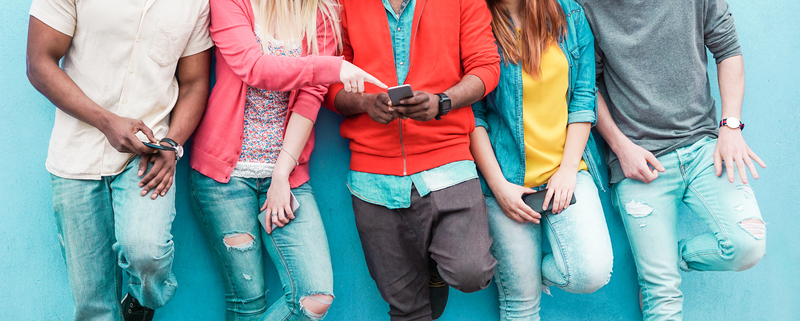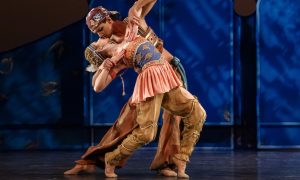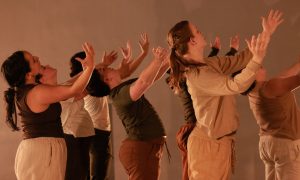Social media. It’s infiltrated every part of our life — our relationships, travel, work, news, school and entertainment. Technically, social media includes any website or application that enables users to create and share content within a social network. Take a moment to think about how many times you utilize social media per day. That’s not only Facebook, Instagram, Tik Tok, Twitter and Snapchat but also Yelp, blogs, YouTube, Pinterest, Reddit and more. And especially in the past year and change, our lives – and the social media we use in it – have completely flipped upside down. During periods of quarantine and being apart, social media has allowed us to reconnect with friends of the past and make new ones. When companies’ seasons were canceled, technology and social media allowed them to still have a presence.
But is this all good? Do we rely on social media too much, or does too much time on our devices have an adverse effect on our mental health? There are positive and negative effects of social media on our society at large, but how does it affect the dance world in particular? Let’s take a closer look.
PRO: So much dance
Social media allows dancers, choreographers, teachers, audiences and fans to post and share dance to a nearly infinite internet audience. We have so much archival material, historical information and visual resources at our fingertips and are inundated with new and innovative content every day.
CON: Tech neck
“Tech neck” is the poor posture we’ve developed from hunching over our cell phones, keyboards and laptops. Joy Karley, a ballet and Pilates teacher over at Broadway Dance Center, worries that today’s tweens have the posture of 80-year-olds. To combat tech neck, strengthen your upper back muscles in Pilates and ballet classes, and be mindful of your head and neck placement when you do use technology.
PRO: Reach
Social media has broadened dance’s audience beyond those sitting in a live theater or tuning in to watch a TV program. We don’t just watch; we can also connect with dancers and organizations around the world.
CON: Comparison
Putting your work – your art – online can be incredibly scary. It’s easy to obsess over how many likes you get and how people respond to your content. This comparison often leads to feeling like you’re not good enough.
PRO: Bringing live dance to your living room
Throughout COVID, when dance companies’ performances were canceled and theaters were closed, directors and choreographers turned to technology and social media to still let their work be seen. Classes and behind-the-scenes footage were made available on Instagram Live, and entire full-length productions were live-streamed on YouTube and Facebook, showing that not even a pandemic could stop the dance world.
CON: There’s nothing like live, in-person performance, though.
Even after the pandemic and when all theaters have returned to normal, will some directors still choose the virtual performance option over a live, in-person show? Nothing can replace the feeling of sitting in a room full of strangers, living and breathing a performance together. There are no distractions from the upstairs neighbor, there are no snacks to be had; that hour-and-a-half is made for enjoying the truly special live art form of dance.
PRO: Engagement
Social media is just that: social. It fosters engagement between creators and audiences and, when used effectively, often cultivates meaningful conversation.
CON: Filming class
Dance class should be a safe space where students can be empowered to take risks without feeling ashamed if they fall down or mess up. While filming dance class has become the norm (especially in musical theater, jazz and street styles), this should not be the priority of class. What’s more, filming class combinations has become so casual and common that sometimes dancers will record on the side of the studio without even asking permission from the teacher or the other dancers in class.
PRO: Platform
For so long, dancers were meant to be seen and not heard. Now, our individual voices and collective voice are growing ever stronger.
CON: Filming performances
The next time you’re at a live theater performance, look around to see how many people are watching through their iPhone camera. It’s mind-blowing. Filming is not only distracting for the performers and other audience members, but it is also illegal and negates the magic of live performance.
PRO: Branding
Organizations and individuals can use social media to build their brand. Think of the image, copy and messaging of New York City Ballet or Broadway Dance Center. And also look at the channels of popular dancers like Katie Boren, Ashley Everett or Maddie Ziegler to see how each dancer is able to show her personality and professional abilities through social media.
CON: Getting jobs
In both the commercial and theater worlds, casting directors often ask you to include your social media handles on your resume. Your number of followers and online image can make or break whether you book a big job.
CON: Hate
Whether it’s gossip, criticism or outright bullying, social media is a breeding ground for hate. For some reason, people feel more confident airing their grievances online, often posting things they would never say in person. As an example, one dancer published a Facebook post mocking a recent Broadway revival. Well, that dancer made her Broadway debut in that very show just months later and had to personally apologize to each member of the cast. Our business is tough enough. Don’t contribute to the hate.
PRO: Promotion
Social channels like Instagram and Twitter offer free (and also relatively inexpensive) marketing tools for teachers, choreographers, studios and performing arts organizations. It has become so much easier to advertise classes, shows and services and to increase awareness of issues in our community (i.e. #boysdoballet).
CON: Pressure
As if filming class wasn’t enough of an invasion, auditions are often filmed nowadays as well. Behind-the-scenes segments are always intriguing and great for marketing a new show, but that added pressure at auditions is every dancer’s worst nightmare.
Social media rules of thumb:
#1. Keep class a safe space.
Honor the sanctity of the dance studio. Class should first and foremost be an encouraging, challenging and motivating environment to foster growth, creativity and artistry. If you (teacher or student) are hoping to record the class combination, ask permission from everyone in the studio and save filming for the very, very end of class.
#2. Live theater should be experienced live.
We’re on our phones over three hours each day. When you’re seeing a live performance, put your phone away so that you can really be present to the experience. Encourage your peers to do the same.
#3. Advertise classes that will be filmed.
Learning to dance for the camera is a tremendous skill! If you want to focus on this, advertise your class accordingly and take the time to teach and practice how dance for film differs from dance on stage.
#4. Always be professional.
That goes for when you’re on stage, in the studio and online. This industry is incredibly small, and no matter how much talent you have, your reputation always precedes you. Make sure it’s one you can be proud of.
#5. Dance for you.
Don’t dance for comments or likes or with the goal of going viral. Never lose sight of creating meaningful art, honing your craft and performing simply because you love to.
By Mary Callahan of Dance Informa.















